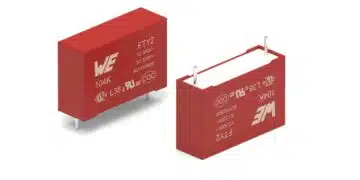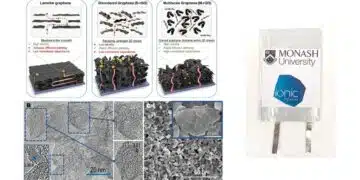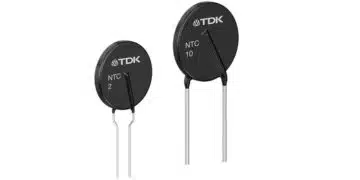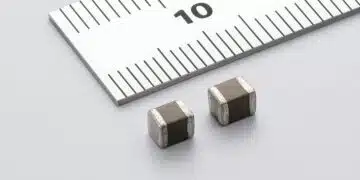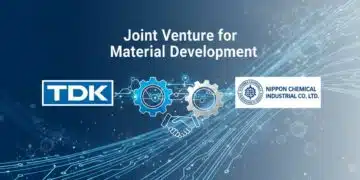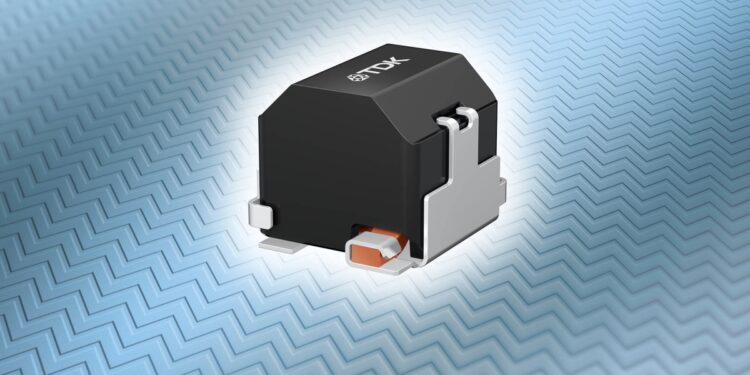TDK now offers shielded SMD power inductors with saturation currents of up to 80 A.
TDK Corporation introduces the new PCM120T series of shielded SMT power inductors, optimized for high saturation currents and low DC resistances. The PCM120T product family includes 14 inductance values between 0.4 μH and 10 μH, whereby saturation currents of up to 80 A are reached depending on the L value.
Optimal saturation properties are achieved through the use of an iron alloy core. Flat wire windings are used to keep losses as low as possible. This results in low ohmic resistance values (RDC) of 0.72 mΩ (0.4 μH) to 9 mΩ (10 μH). The new inductors have an outstanding EMC performance due to closed housing made of ferrite material without an external gap. They are ideal for automatic solder joint inspection (AOI) and achieve a coplanarity of <0.1 mm due to their lead frame structure. The product’s metal cores provide resistance against high voltage pulses in accordance with ISO7636. The components’ dimensions are 12.7 x 15.8 x 11.5 mm (W x L x H). The powerful RoHS-compatible inductors are designed for a wide temperature range from -55 °C to +165 °C and are certified according to AEC-Q200.
Typical applications include primary DC/DC converters in automotive applications such as ADAS, power supplies for servers and base stations, and various types of DC/DC converters. The PCM120T components are also ideal for interference suppression, such as electric motors in vehicles.
Features
- High saturation currents of up to 80 A
- Wide range of inductance values from 0.4 μH to 10 μH
- Low RDC of min. 0.72 mΩ
- Wide temperature range from -55°C to +165 °C
- AEC-Q200 compliant and RoHS-compatible
- AOI suitability
- Excellent EMC properties
- High withstanding voltage
Applications
- Primary DC/DC converters in automotive applications, e.g., for ADAS
- Power supplies for servers and base stations
- DC/DC converters
- Vehicle motor interference suppression


